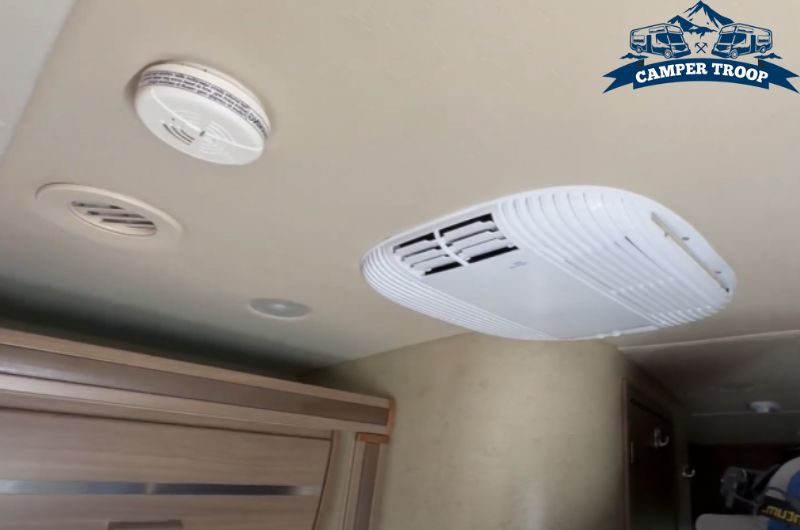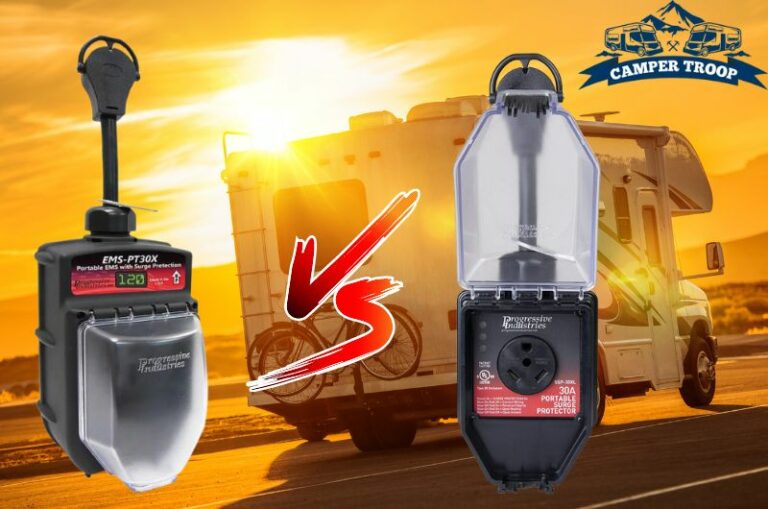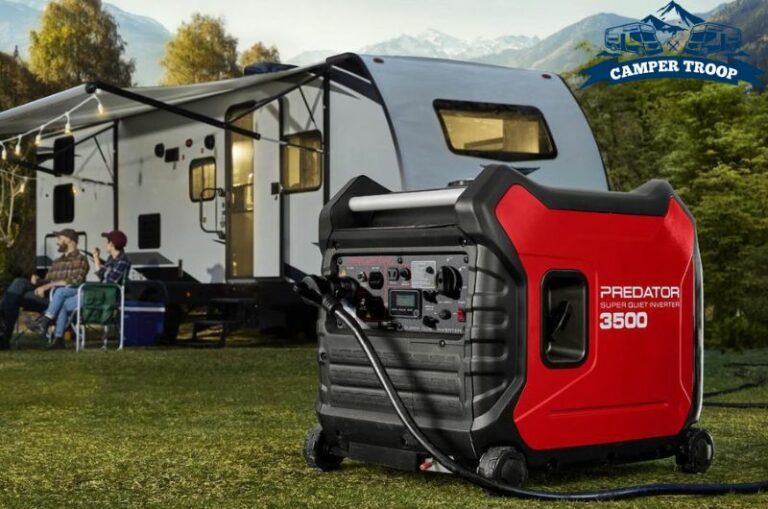Ducted vs. Non-Ducted RV AC: What Should Be Your Choice?
When installing AC on a recreational vehicle, you should either go with the ducted system or the non-ducted one. And you also need to consider the size of your RV, its affordability, its maintenance, and the differences between them.
One of the major differences between ducted and non ducted RV AC is the cooling capacity. An AC that uses a series of ducts is supposed to provide more powerful cooling compared to a non-ducted one. Besides, there are differences in installation cost, noise level, and more.
So, let’s know in detail what is suitable for your RV as the ultimate air cooling solution.

Ducted Vs Non Ducted RV AC: Comparison Table
The ducts’ usage creates the difference between the ducted air cooler and the non-ducted air cooler. And for this very reason, both RV cooling systems have unique characteristics and efficiency.
| Factors | Ducted RV AC | Non-ducted RV AC |
| Power Range | Highly powerful | Less powerful |
| Cooling Coverage | Covers big space | Covers less space. |
| Ease of Installation | Difficult to install | Easy to install |
| Installation Cost | More expensive | Affordable |
| Maintenance | Requires more maintenance | Requires less maintenance |
| Noise | Quiter | Noisy |
| Flexibility | Offers more flexibility | Offers less flexibility |
| Power Consumption | Consumes more power | Consumes less power |
Read Also: RV AC Freeze Sensor Location [Complete Guide to a Freeze Sensor]
Ducted Vs Non Ducted RV AC Differences:
Now you have some ideas about the difference between the RV air cooler systems. But you can’t make the right choice if you don’t have an in-depth idea regarding the comparison factors.
Power Capacity
The ducted RV AC can generate more cooling power than the non-ducted AC. And the key reason behind this ducted RV AC is that it uses a system of ducts to cool the RV’s temperature.
On the other hand, the non-ducted RV AC only comes with a single vent. In addition, the non-ducted RV generates cool air from the unit and directs it into the RV.
And that’s why it is not supposed to generate that much cooling power compared to the ducted one.
Cooling Coverage
You can expect the ducted RV AC to cover more area throughout the RV than the non-ducted RV AC.
And then again, the reason here is the system of ducts used on ducted RV AC. Multiple ducts can distribute the cool air throughout the entire area inside the RV.
The non-ducted RV AC is not quite up to the mark in cooling the entire space of your RV due to its lack of reach. According to experts, as the non-ducted RV AC blows air from the bottom of the unit, it can cover less area than the ducted RV AC.
Read Also: 6 Reasons Why Does RV AC Compressor Start and Then Stop
Ease of Installation
The non-ducted RV AC installation process is simpler than the ducted RV AC installation process. And there are a few valid reasons behind this. In the case of installing the ducted RV AC, you need to install the ducts, which are complex and time-consuming.
You don’t need to install multiple ducts for the non-ducted RV AC installation. Installation of a single vent can do the job in this case.
Maintenance
Ducted RV AC requires more maintenance compared to non-ducted RV AC. And that’s the key reason why non-ducted RV AC is more popular. You need to perform regular maintenance on your ducted RV AC.
Whereas, as the non-ducted RV AC doesn’t come with a series of ducts, comparatively less maintenance won’t bring any issues. Cleaning the single vent of the non-ducted RV AC won’t take too much effort and time.
Read Also: Adding Second AC to 50 Amp RV: A Complete DIY Guide
Power Consumption
The ducted RV air cooler has more power capacity than the non-ducted RV air cooler. And so, it makes sense that RV AC with robust power capacity will consume more electrical power. Moreover, the multiple ducts of the ducted RV need more power.
The exact power consumption of ducted and non-ducted RV AC depends on the power capacity, models, and brands.
It is always better to get the power consumption of your RV AC from the manufacturer. A regular RV AC consumes around 700-1800 watts if you use it for 12 hours.
Noise Level
Compared to the power capacity of a ducted RV air cooler, a non-ducted RV air cooler generates more noise.
And this mostly happens due to the compressor of the non-ducted RV AC. In addition, as the vent of the non-ducted RV air cooler is inside the RV, this causes noise.
However, regular maintenance can also reduce the noise level of your non-ducted air cooler. Here is a video on how to reduce the noise level of your RV.
Read Also: RV AC Unit Humming But Fan Not Running – Why & How To Fix?
Similarities Between Ducted and Non-Ducted RV AC
Apart from the differences we have mentioned, there are a few similarities between Ducted and non-ducted air coolers. Now let’s have a quick look at the points below;
- The ducted and non-ducted RV AC need an electrical power source to operate.
- The refrigerant is used to cool the air by both cooling systems.
- You can use the two types of RV air coolers, regardless of the model of your RV.
- Both ducted and non-ducted RV air coolers come with filters.
- The ducted and non-ducted RV air coolers have fans.
Read Also: How to Solve RV AC Clicks But Won’t Turn On Problem?
Ducted or Non-ducted RV AC; What Should Be Your Choice?
If your RV’s size is comparatively larger, you should go with the ducted air cooler. On the other hand, if you have a small-sized RV, then the non-ducted air cooler should be your choice. In addition, the budget can be a key consideration as well.
The non-ducted one is always good when looking for an affordable air cooler option for your RV. Plus, if you want to go with regular maintenance, The same goes for power efficiency as well.
But if you don’t want to compromise power capacity and flexibility, the ducted RV air cooler is the way to go!
Frequently Asked Questions
We have now come across some of the most common queries of people who are in confusion about whether to go with ducted or non-ducted RV AC. Here, we will let you know the answers to some questions.
Is ducted cooling good?
A ducted air cooler can provide impressive cooling throughout the recreational vehicle. Moreover, the ducted AC can ensure significant power capacity due to the series of ducts. The multiple ducts are key to distributing cool air into the RV spaces.
What are the maintenance requirements for ducted cooling systems?
You can get the most out of a Ducted cooling system by being a bit careful about its maintenance. Moreover, you should clean the filters of the ducted RV AC regularly. Additionally, you must be diligent when looking for duct leaks.
How does the installation process differ between ducted and non-ducted RV AC?
One key difference is that you need to install ductwork to set up the ducted RV AC. However, in the case of installing the non-ducted RV AC, you don’t need to uninstall any ductwork.
Read Also: RV AC Soft Start Vs Easy Start Kit | Which One is Worth it?

Zayan is an accomplished author and a go-to expert for all things RV and camper-related. With a passion for adventure and a knack for problem-solving, he has spent years exploring the open road and fine-tuning his knowledge of recreational vehicles.
Zayan’s writing is a testament to his expertise, offering readers practical solutions to common RV dilemmas. Whether it’s troubleshooting mechanical issues, optimizing space, or planning the perfect road trip, Zayan’s insightful advice and engaging storytelling make him an invaluable resource for both seasoned travelers and newcomers to the world of RVing.

![7 Common Problems with Residential RV Refrigerators [Solved]](https://campertroop.com/wp-content/uploads/2023/08/Residential-RV-Refrigerators-Problems-768x509.jpg)



